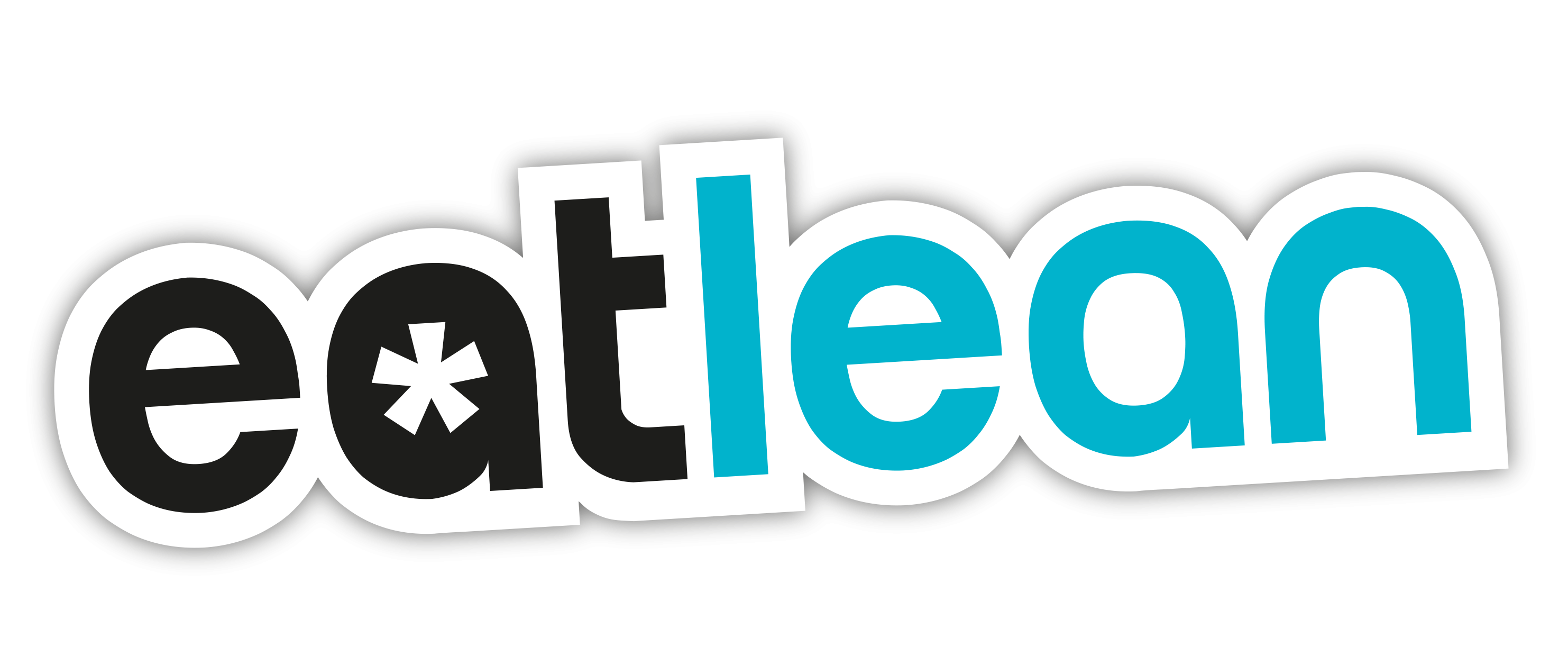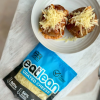Get Moving: The Importance Of Exercise In A Healthy Lifestyle

Over the last few articles we have covered the different aspects of dieting which I feel will help you. By now you should have a bit more of an understanding of how the human body views and uses food, and you should have a bit of an understanding of how you can manipulate a few variables to bring your nutrition more ‘in line’ with your goals.
It is my aim with this journey to empower you and educate you so that you are able to start building healthy food habits that will carry on for the rest of your life. I want you to be energised, sleeping well, feeling great and moving towards any physical goals that you may have set yourself.
Nutrition is, however, only one side of the coin. Exercise is hugely important too.
In fact, independent of weight loss, exercising intensely for just three hours per week cuts your risk of various cancers, diabetes, depression, severe osteoporosis and all-cause mortality by a HUGE percentage. The most effective form of exercise for this purpose is resistance training, as this improves joint and bone integrity along with blood markers of health and, of course, muscle mass.
More on that later, though, let’s start at the bottom.
The World Health Organisation recommends a MINIMUM of 150 minutes per week of moderate activity, which is anything that raises your heart rate and makes you a little breathless, or 75 minutes of rigorous exercise, or a combination of the two, and at least 2 body strengthening workouts per week. For a lot of people just starting out on their journey, 150 minutes of activity is where I’d recommend you set your sites. You don’t have to go from 0-150 immediately, of course, it can be built up over time, but this is what is simultaneously:
- The easiest thing to implement, as you’ll see in a second.
- The biggest ‘bang for your buck’ as far as effort:reward ratio goes when first starting out. These things work in a strict pattern of diminishing returns, meaning that going from no activity to being active for 150 minutes per week will have a HUGE impact on your health and wellbeing, for very little actual effort. Increasing the intensity of exercise by doing exercise classes or formal cardiovascular exercise like taking up jogging is marginally ‘better’ but is a lot harder to start doing, and then at the top we have weight training which is incredibly good for you, but the effort you need to put in has increased once more. Getting active takes very little in the way of lifestyle change, but it can change your life.
So, activity is easy to start including in your life – but what actually IS ‘activity’?
Activity, actually, is just about anything that gets you moving. The most commonly recommended form is a brisk walk (if you have a dog, this is a PERFECT way to “get your minutes in”) but it can take any form. You don’t even have to do all of your activity at once, with the WHO recommending numerous 10-minute bouts as an option. This could be gardening, housework, dancing, swimming, playing games, commuting, shopping with a basket rather than a trolley and walking around quickly, any number of things which get you moving around and which leave you a little breathless is good.
In terms of weight loss, this will help by increasing the amount of calories you expend on any given day, but it actually won’t do this by all that much. 20 minutes or so of moderate activity per day isn’t going to burn many more than 100-150 calories which is less than two slices of toast, but it still has fat loss benefits indirectly. When researched, those who include exercise in their fat loss efforts are WAY more likely to keep the weight off long term. There’s no solid consensus on why this is, but I’d argue that those who exercise have more energy and feel better day-to-day, and this means that the journey is a more pleasant one, helping you to stick to the plan. It also creates a positive catch 22 environment, if you exercise you are driven to eat better to almost make the exercise you do count, aiding you in reaching your goals quicker.
Additionally to this, if some of the activity you undertake is in a class environment, with a friend or with a trainer, you have an extra source of motivation and an extra incentive to adhere to the plan. Whatever the reason, it helps fat loss, and it can make an enormous impact on your overall health independently of this.
Even if you are starting out, or not quite ‘into’ training yet, pick something that resonates with you, it might be some simple movements at home combined with a brisk walk or light jog, it might be some yoga so you improve your flexibility at the same time, whatever it is make it easy to start with, make it manageable, and make it enjoyable, cause if you enjoy it you are more likely to stick to it, and I want you to enjoy this journey. I am trying to get you to embrace and implement change, for the long term, these habits have got to stick, not be around for a couple of weeks then you slip back into your old ways, we need to find something you enjoy and can embrace and essentially forms the ‘new you’.
Once you do make exercise part of your daily routine, and you are enjoying a couple of sessions a week, it now takes far less effort to increase the duration and/or intensity of your activity in order to start reaping more benefits. This is why it’s always good to start small and build – lifestyle changes take time in order to make them permanent, so start small and not too intense, and then gain momentum when you feel confident and ready too, and at this point you will also know how you want to make the step up (i.e. progressing from a brisk walk for 15 minutes plus 15 minutes of body weight movements 3 days per week to 4 days a week of jogging for 20 minutes plus 30 minutes of more intense body weight training at home).
Over time, if possible, your training should include 2 weekly sessions of resistance based training with the aim of increasing and supporting your muscle mass. This could be as simple as performing some press-ups, bodyweight squats and kettlebell work at home initially, as the benefits you will get are far-reaching.
Resistance training will:
– Improve muscle tone and strength, meaning that every day tasks get a lot easier
– Improve bone mineral density, especially as you age
– Improve body ‘shape’ meaning that if you lose weight, you will look better, rather than being the same shape, only smaller – a situation often referred to as ‘skinny-fat’
– Reduce your chances of injury by strengthening joints and stabilising muscles
– Improve self-confidence by allowing you to see regular, fast coming and MEANINGFUL progress
– Improve your glucose management. This, in simple terms, means you’re less likely to become diabetic and/or store ‘belly fat’.
So in sum, improving your diet is going to increase your health, help you lose weight, allow you to sleep and concentrate better and give you more energy, but including physical activity will amplify these effects massively, and also will protect you against various ailments, injuries and health issues down the road.
It’s important that we don’t overdo it, though. As I mentioned at the start, exercise works in a pattern of diminishing returns and doing way more than is necessary can be counter-productive. Eventually you’ll be putting in more effort than you’ll be getting the benefits of, and that’s only going to lead you to get frustrated and then giving up on it all. If you find yourself far exceeding the recommendations above, ask yourself why. More isn’t always better, you have to be able to manage it, have the time for it, and recover from it.
If you enjoy the training, you feel great and you look forward to workouts then that’s awesome, but if you’re training 7 days per week for over an hour every time because you want to get results faster, know that you’re not actually going to get the payout from the investment you have put in. 4-5 days per week, at a maximum, of 30-60 minutes of exercise is more than enough for now and doing more won’t really benefit you. When your goals get a little loftier, that’s when you can look to increase the INTENSITY and modality of your training, rather than just doing more sessions of HIIT or step work.
To fit it all together, I would recommend you take your starting point now and look to improve upon it slowly, allowing your body, mind and schedule to adapt to the increased demands. As an example, I will take someone who is completely new to exercise and show you the full journey I would take them on – you will find yourself somewhere along these lines, so just pick up from there. Each bullet point is a step within a stage, so don’t try to implement them all at once – work through, point by point, moving on when you are able to do each step, consistently, without weeks off or missed sessions (outside of extenuating circumstances, of course).
First stage – No activity
In this stage, you don’t really do much or anything in the way of activity. You might walk around the supermarket and occasionally stroll to the local shop, but generally speaking you get up, drive to work, sit, drive home, sit and go to bed. This is 90% of the modern world, so don’t feel at all that you are alone!
- Look to perform 60 minutes of moderate activity over the course of the week, this is as simple as going for a brisk 30 minute walk, once during the week when you get the chance, and once at the weekend when time is a little more flexible. I include the midweek walk because this gets you in the habit of ‘making time’ to exercise rather than just hoping you’ll find it. In the modern world, just about everyone is busy and time is a commodity which is in short supply – if you are going to take care of your health by exercising regularly, you need to start prioritising it over other things, or you’ll never manage.
- After a couple of weeks, add in another 30-minute session of something. This could be another walk, a light home workout or a combination of the two.
- After a couple of weeks, add another, and then finally add another. Ideally look to get to the point where you are using the Gym 2-3 times and walking 2-3 times. Initially this may seem like a large undertaking, after all you are doing something every single day, but this first stage may take a few months to build up. Take it at your own pace, but make sure you set a SMART goal to ensure you have a time-frame in which to build up your activity or you’ll likely procrastinate. 3 months to go from zero to five 30-minute sessions per week is a good range for the majority.
Stage two – Lightly Active
You’re in the habit of moving now, and you should already be starting to feel a little different about yourself and about exercise. Provided you’ve started to implement various dietary changes you might be noticing a change in how your body looks, too. Let’s start to build on it.
- Keep your 2-3 walks, but switch one workout to a high intensity one, either a HIIT session or something with a kettlebell. Get used to the increased demands of the session. You should now be doing 2-3 walks and 2-3 Gym sessions, one of which is high intensity.
- Increase your walks to 45 minutes each, or consider starting to jog some or one of them (jog, walk, jog, walk). We are now looking to move towards the 150 minutes of rigorous/300 minutes of moderate activity recommendation, using an equivalent combination of the two, and this is an important step to doing so.
- Add in another resistance training session, so you are now doing two to three 45-minute walks or a 30 minute jog/walk combination and 2-3 Gym workouts including two intense ones. Idaelly gym workouts will be part of structured, periodized program and not just willy nilly one-offs.
This stage looks easy, but again this could take months to build up as you are now placing a higher demand on the body. Just be aware that this increased demand is going to do WONDERS for your health, body and self-confidence.
Stage three – Active
This is the final stage for now. At this stage you should be seeing some pretty big differences, if not on the scale or in the mirror, then just on your day to day energy levels and your day to day movements. Getting up from the floor should be easier, your joints should hurt less, you shouldn’t get breathless climbing stairs anymore. In short, you are becoming ‘fit’.
- Drop some walking and aim to get to the point where you are walking once per week (probably at the weekend) and using Gym workouts 3-4 times per week, for a total of 30-60 minutes per workout.
- Increase the duration of your weekend walk to 60+ minutes. Hit the beach or local park and make it a family thing.
- Consider changing your weekend walk to a bike ride, hike or similar.
- Add in extra walking where you can outside of the formal planned one – using tips from above, walk as much of your morning commute as you can, take the stairs, walk to the shop a few times per week rather than driving once, park further away from the shops, wherever you can, it all adds up.
Once you finish stage three, you should be building a pretty good baseline of fitness, your breathing will be better, heart rate and blood pressure lower and your chances of getting chronic diseases will be dramatically less. This process may take 3 months, it may take 6, it might take a year or longer. Just use the Goal Setting week’s advice and do it in stages and steps that are realistically manageable for you.
Diet and exercise
When it comes to your diet, it doesn’t actually need to be that much more complicated to factor in your training. So far I have got you to eat higher quality food, got you thinking about protein, then vegetables and fruit, then getting a solid ratio that works for you in terms of fat and or carbohydrates, and got you eating regularly in a way that is conductive towards your goals in an amount that will stimulate either weight loss, weight maintenance, or weight gain. Now with exercise, it’s just a case of ensuring you are eating adequate carbohydrates in your diet to fuel and recover from training (ensuring you are having at least 1-2x servings a day is enough), and that you are eating enough to fuel training, recovery, and life. Whenever your training changes you do need to adjust your dietary intake to match.
Remember previously we talked about Calories, and I got you to look at a calculation where we calculated your Caloric need for day to day life, which is your BMR, and then multiply that to account for your daily energy expenditure. Well, if your exercise starts to get more intense, you are doing more and pushing and progressing yourself, then your dietary intake needs to match this. If you go from light activity 2-3x a week to more intense activity 3-5x a week this could be significantly more calories you are burning, and this requires more food. It’s not just a case of doing more and fingers crossed for more fat loss. Now, saying that, if you were not at this point in time losing much body fat (i.e. not losing 1-2 lbs per week of body fat), adding in more exercise is actually a great way to create a calorie deficit, it will give you that extra 200-400 less calories in your diet to stimulate weight loss. But if you are already losing weight, then adding in more exercise to force a greater rate of weight loss is not a good thing, it will mean you’ll impair your recovery, sleep, and make your body more stressed than it has to be as it doesn’t have enough macro and micronutrients to recover and support your health as needed.
So with your diet, just be aware of what you need to account for when it comes to your training, both from an overall calorie intake perspective, to getting enough carbohydrates in to support that level of exercise. I would recommend that you consume food within 1-4 hours before you exercise to ensure you have a solid blood sugar level and don’t feel hungry before training, and then eat around 30-90 minuets after exercise. This way we can keep your blood sugar level consistent, keep on top of your recovery ability, and ensure we are getting a feeding of protein every 4-5 hours in the day, which is important for health, recovery and exercise performance. Check out our healthy eating hub for all the best high protein, low fat recipes.
If you haven’t eaten for a long time and then do some exercise, ensure you eat quite soon after exercise as your body will have a greater need for food as it’s been quite some time already since having eaten. If you didn’t eat too long before exercise then it won’t be as urgent to eat after exercise as there will still be some food floating about, so use this simple method to know how often and when is appropriate to eat, making it convenient for you around your lifestyle.
As with my previous advice, with listening to your body when it comes to the food that you eat, do the same with foods before and after exercise. There are no magic before and after foods, I want you to stick to the main template I have been teaching you for all your meals. But as you progress and experiment, you may notice that a little more carbohydrates before exercise, or ensuring there are some in your meal before you exercise benefits your exercise session, and that the same is felt for eating some carbohydrates in the meal after you exercise. This is not paramount, but you do need carbohydrates in your diet at some point in the day to stay on top of recovery and exercise performance, but as with anything, pay attention to the feedback you get from your body and adjust your dietary intake to match the feedback you get on consecutive training sessions.
Summary
Becoming more active is one of the best things you’ll ever do. Take things slow, build yourself up, and push yourself when it is appropriate to do so. Then as you build up adjust your dietary intake, make sure you are eating enough to fuel your training even if you are eating for fat loss to ensure you keep on top of your health and recovery, and listen to the signals your body gives you on how to adjust your meals around training to get the best level of performance for your body. Factor all this in, and success is yours. There is also the fact that more exercise could mean a bit more food and, obviously, some of that could include Eatlean products.






